| September 16, 2016 | ||
It is time to prepare the electrical connection to the samples! 24 wires per cable, two connectors (fisher, amphenol) per cable, 8 cables : hours of happiness! |
||
| September 9, 2016 | ||
Is it ballet or mime? No, it is a workshop for twisted pairs, look carfully and you'll see the wire! |
||
| August 25, 2016 | ||
The 'quick and dirty' sample stage that will allow testing of the magnetic field and cooling power while we are waiting for a nicer version of the sample stage. |
||
| September 9, 2016 | ||
Pauline Pestre will work in Gervais' Lab in for the next 2 semesters for her project of PHYS459. Welcome Pauline |
||
| August 12, 2016 | ||
The summer internship of Eli in Gervais' lab comes to an end, all the best Eli! |
||
| August 12, 2016 | ||
The summer internship of Emily in Gervais' lab comes to an end, all the best Emily! |
||
| July 29, 2016 | ||
The new fridge just passed the technical check up, it is ready to be used, almost : we need to build a sample stage to be able to place them into the 9 T magnetic field at 7 mK |
||
| June 3, 2016 | ||
The VTI's lockins are working after a long rest, they successfully measured a resistance! The VTI system will be cooled down this afternoon, it is the first system of Gervais Lab to be in a working status, many will follow soon! Stay tuned. |
||
| May 20, 2016 | ||
Meanwhile the lab is getting ready to start producing raw science, very first ingredient : PVC pipes to connect the fridges to the pumping room. |
||
| April 18, 2016 | ||
something changed here... click on the picture to know more! |
||
| March 9, 2016 | ||
An unsual view from the lab... |
||
| March 2, 2016 | ||
A hole appeared on the wall of the lab, it is probably a sign of the beginning of renovations! |
||
| Febuary 29, 2016 | ||
Matei Petrescu uploaded the final version of his Master thesis : 'Computational Fluid Dynamics in Mesoscopic Nozzles'. Congrats Matei! |
||
| Febuary 25, 2016 | ||
Due to imminent renovations, half of the lab is condemned. The student density is therefore increasing in the other half, hopefully leading to an increase in pure science per square meter. |
||
| Febuary 18, 2016 | ||
Prof. Gervais is in constant search of a new exotic 2DEG and already applied the lab knowhow in corbino geometries to a Swiss raclette sample. The latter was fabricated at the high-tech research center of Val d'Hérens in Switzerland. |
||
| Febuary 15, 2016 | ||
Prof. Gervais checking on the helium harvest. |
||
| January 25, 2016 | ||
Ou Lin will start his Ph.D. in Gervais' Lab in May. Welcome Ou Lin |
||
| January 4, 2016 | ||
The presence of Gervais Lab into the Quebec Science 10 Discoveries of the Year for its research on black phosphorus made the McGill news! |
||
| December 15, 2015 | ||
Samuel Gaucher submitted the final version of his Master thesis : 'Flip-Chip Fabry-Perot Electron Interferometer'. Congrats Samuel! |
||
| December 9, 2015 | ||
Prof. Gervais watching a sample of the artwork of Tex Avery while his son follows with passion the renormalization group presentation by Prof. C. Bourbonnais from Sherbrooke University. |
||
| November 23, 2015 | ||
| September, 2015 | ||
We received the helium liquefactor! In the near future we will connect all systems using helium-4 in the lab to this machine and be able to save helium-4! (right now the only system connected is the dilution fridge one). |
||
| Febuary, 2015 | ||
Congratulations to Dr. Michel Savard who has successfully defended his PhD thesis (Mass Transport in Single Nanopores). Good luck in your future career! |
 |
|
| January, 2015 | ||
Olivier Cyr-Choinière Joins the group as a post-doc, he will study 2D crystals under high magnetic fields and hydrostatic pressure. Welcome Olivier! |
||
| August 28, 2013 | ||
| Congratulations to Bohdan Kulchytskyy! | ||
Congratulations Bohdan for winning a best poster award at the International Symposium on Quantum Fluids and Solids 2013! Bohdan's work has also led to a publication in Physical Review B: Local Superfluidity at the Nanoscale. Rumor has it that he has already had to turn down multiple post-doctoral positions because he hasn't even started grad school yet! Bohdan has just finished his Bachelor's degree at McGill, and will be continuing his studies at the University of Waterloo in the fall. Good luck Bohdan! |
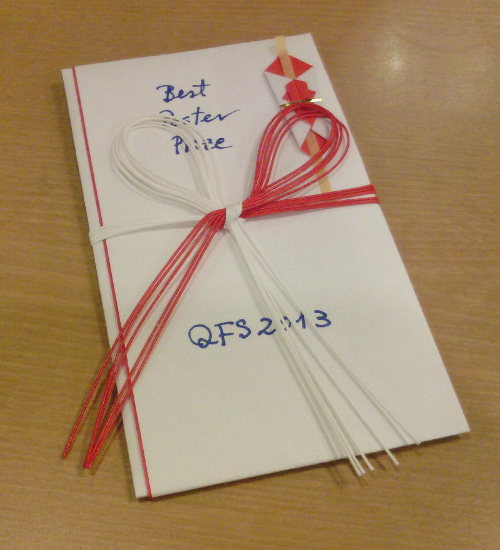 |
|
| January 7, 2013 | ||
| New experiments to test the Unruh effect | ||
We are now in the process of studying the Unruh effect using Alpine born technologies.
The Unruh effect predicts that an accelerating observer would observe blackbody radiation. We estimate that for a 1/4 mile in 9.5 s, our (multilayer) graphene-covered HP4 apparatus will radiate Hawking-Unruh photons at a frequency of 1/(10E10 years). Provided that we can secure a (very) long-term source of funding, we are confident that this experiment will provide indisputable evidence of this important prediction of relativity... |
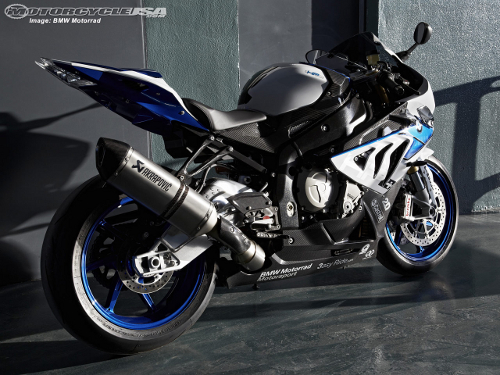 |
|
| January 23, 2012 | ||
| Gervais lab: now with 33% more science! | ||
A couple of huge crates mysteriously showed up on the loading dock the other day, and inside we found... a brand new fridge! With all the students and post-docs in the group these days, three fridges just weren't enough. Plus, the lab has four corners, so might as well use them all! The new fridge is a 1 K cryostat, which we will use mostly to test samples with high throughput - and then the best ones can go in the dilution fridges. |
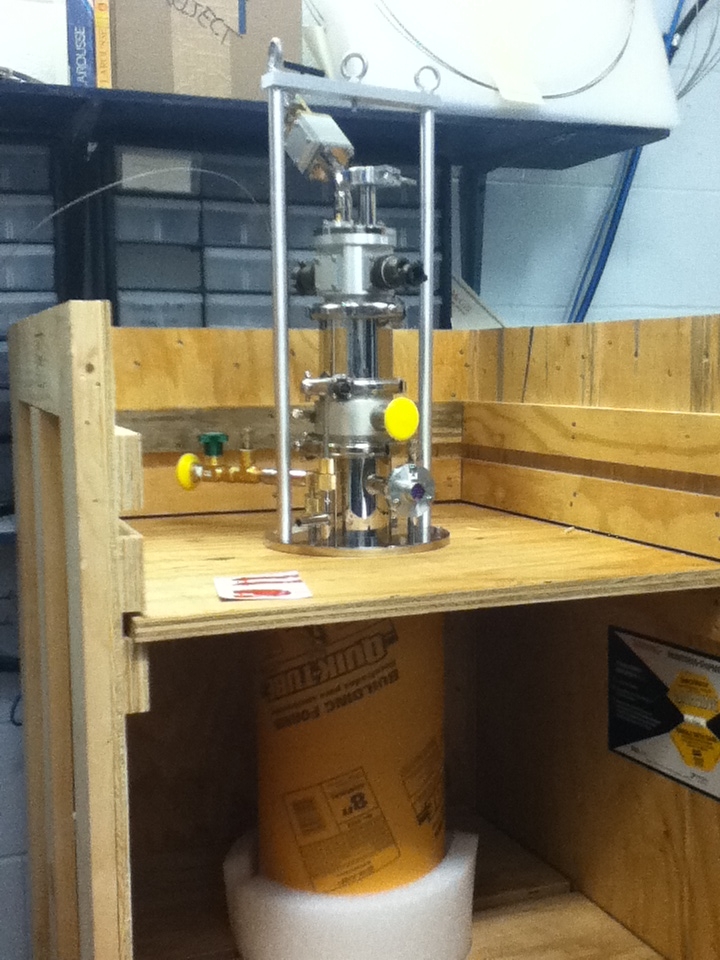 |
|
| February 26, 2008 | ||
| High-Field AFM is possible! | ||
Roughly 10 feet beneath the lab floor, in the cold darkness of the pit, electrons swirled in silence through a superconducting coil. Two things were present in the center of this coil: one being an enormous magnetic field, the other, a fully functioning atomic force microscope. The topographic image of Potassium Bromide (KBr) crystal terraces to the right was taken with our homebuilt scanned probe microscope shortly after reaching a field strength of 15 Tesla. The temperature was approximately 4.2 Kelvin. This represents the highest magnetic field force microscopy yet reported. (Oh yeah, it looked the same at zero field too, which is a good thing!) |
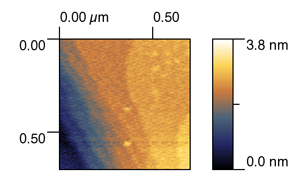 |
|
| August 27, 2007 | ||
| The Lab - a new sitcom coming soon... | ||
| July 29, 2007 | ||
| ULT-SPM gets a little bit chilly | ||
| The ULT-SPM has survived (mostly) its first trip to the frosty regime of Liquid Nitrogen. Seen here is a rendering of our first image taken at 77K. (Of course, the tip has been slightly idealized, but the DVD surface is actual topographic data.) | 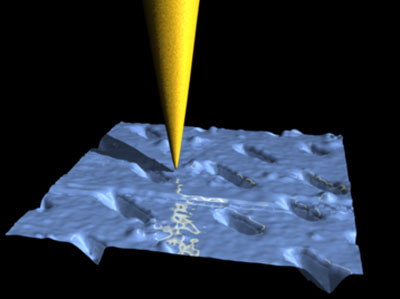 |
|
| July 18, 2007 | ||
| Gervais lab takes on the boot: | ||
| Once again, the basement of Rutherford draws international attention. From a recent clipping of the Italian paper, l'Unità, it's clear that the little town of Genova could barely contain the recent influx of 2-DEG physicists attending the International Conference on Electronic Properties of Two-dimensional Systems and Modulated Semiconductor Structures. Notably, our PhD student Cory Dean found himself front page news. See below. | ||
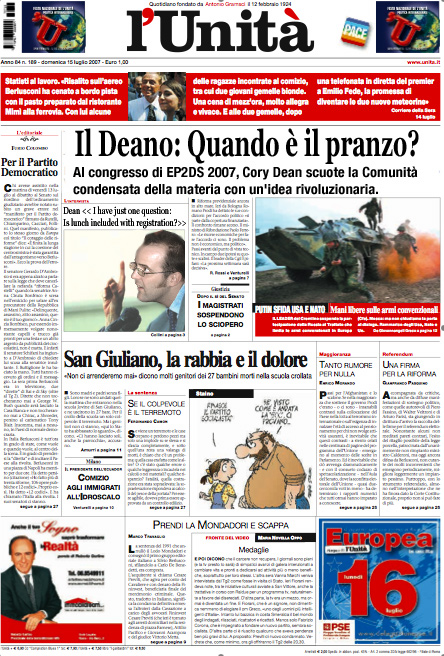 |
||
| April 10, 2007 | ||
| First Light | ||
| Like a hungry eaglet poking its newly formed beak through the crystallized protein matrix of the shell to be welcomed into the world by the warming rays of the spring sun, the ULT-SPM has just emerged from the silent womb of development. Our first scan lines commenced, the feedback was tuned, the quartz oscillator shook like Lucretious' swerving atom of free will, and Lo!, an image slowly formed on the screen, line by sweet line. Shown here are the results from this momentous day. These simple images of the pits on a digital video disk (DVD) demonstrate that indeed, the scanning probe microscope works, at least at room temperature. We can thus continue with Phase 2 of the ULT-SPM project: de-buggin'. Of course, some images at 50 milliKelvin will be the next major milestone, so stay tuned. |
|
|
| January 28, 2007 | ||
| The Whiteboard ... | ||
| What physics lab would be complete without the whiteboard full of scribbles, schematics, and equations. Cory Dean is seen here exploring the seemingly random markings; however, random they are not. After some moments of careful consideration... | 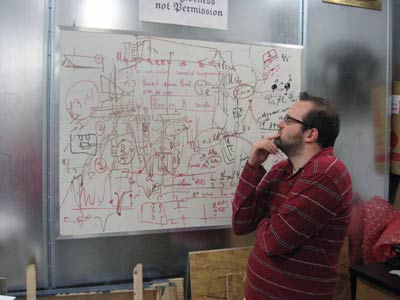 |
|
| he finally sees the light. Inset: an enlargement of the apparently illuminating region. |  |
|
| October 6, 2006 | ||
| Quantum Tunneling Observed at the Macroscopic Level!!! | ||
| At the annual McGill Physics Department BBQ, many physicists were profoundly startled by what seemed to be perhaps the most macroscopic example of quantum tunneling ever observed. Well known by most attendees, the phenomenon of quantum tunneling, in its most simple form, requires both a barrier and a particle. During the yearly softball game between the faculty and the graduate students, both of these needs were satisfied. | ||
| The particle: a common softball, with wavelength approximately 10-34 m: |  |
|
| The wall: Guillaume, with potential not precisely defined, but clearly quite large: | 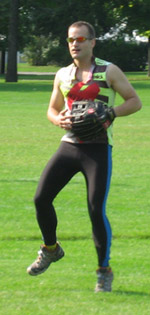 |
|
| Classically speaking, the probability that such a particle would pass through the barrier, is clearly zero. However, through elementary calculations using the apparatus of quantum mechanics, we can find a non-zero, though quite small, probability for such an event to occur. It was late in the game when the slightly intoxicated crowd was shocked into sobriety by actually witnessing the event. Even more shocking was the striking photographic record of the event. (It must be stated that the following photograph has not been altered in any way, keeping with the ethical code any good scientist must adhere to when reporting data.) | ||
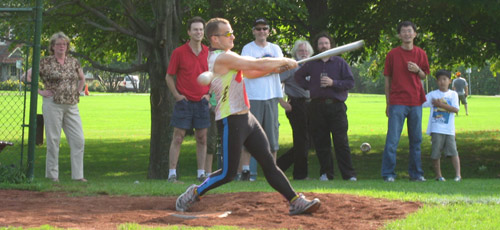 |
||
| For the sake of clarification, the following image has been labeled to highlight the relevant items. | ||
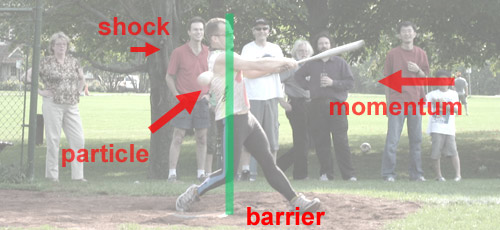 |
||
| A publication regarding this event is forthcoming. | ||
| September 14, 2006 | ||
Secret Spy Film Footage Obtained from the Basement. Click the red triangle to see and hear the z-axis motor move on the ULT-SPM. (requires flash) |
||
| August 1, 2006 | ||
| Summer Students are 'having a great time and learning a lot' | ||
|
 |
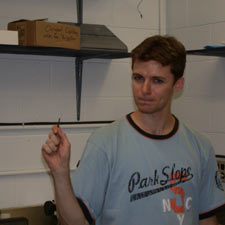 |
| July 14, 2006 | ||
breaking news: We are now actively conducting experiments at highspeed, high centrifugal forces, and from HORIZONTAL -g to +g
|
||
 |
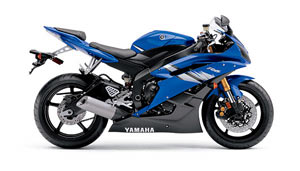 |
|
| Feb 22, 2006 | ||
Hooke's Law has been reestablished. As an aside to the high-tech world of ultra-low temp physics, we had cause to verify some existing physical principles, namely the expansion of a spring in proportion to the applied strain, also known as Hooke's Law, after one Robert Hooke. Also known for such works as "An Account Of the Experiment of preserving Animals alive by blowing through their Lungs with Bellows" and "An Experiment for the Condensation of Spirit of Wine," Robert Hooke discovered this well-known behavior of springs in 1660, and delivered the results in a treatise aptly entitled "Of Spring" in 1678. |
||
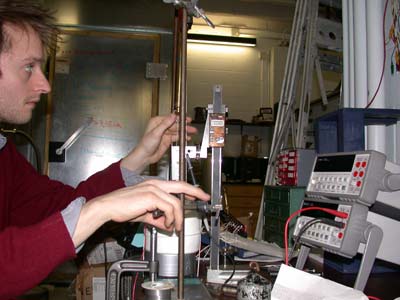 |
James, shown here conducting the experiment on a set of bellows submerged in liquid Nitrogen. | |
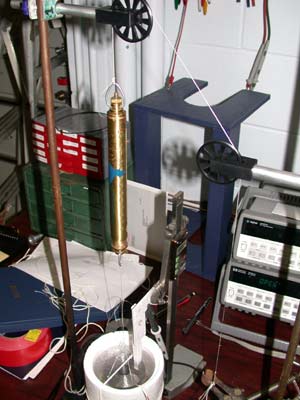 |
A detailed shot of the experimental set-up. Note the two pulley's, kindly lent to us by Mario. | |
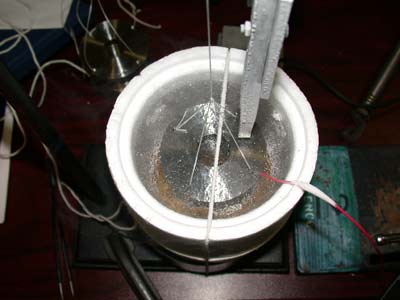 |
The bellows as submerged in LN2. | |
| Page 1 of Hooke's 1678 work De Potentia Restitutiva, or Of Spring. | ||
In the end, we were quite glad to see that the bellow did in fact expand in proportion to the strain. Next, we plan on examining the influence of the electromotive force on frog legs.
|
||
| Feb 19, 2006 | ||
| To celebrate the completion of our construction (which started sep 13, 2005) we hosted a labfest last week. Many fellow physicists came to see what all the noise coming from the basement for the past 3 months was about. Here are some shots from the gala affair. | ||
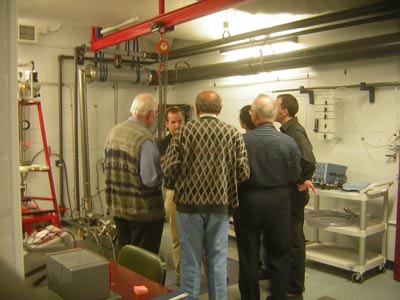 |
Guillaume explaining the ins and outs of the lab to some obviously curious visitors. |
|
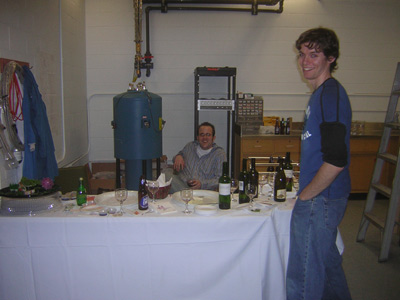 |
Guillaume and Cory enjoying the afterglow of the labfest. | |